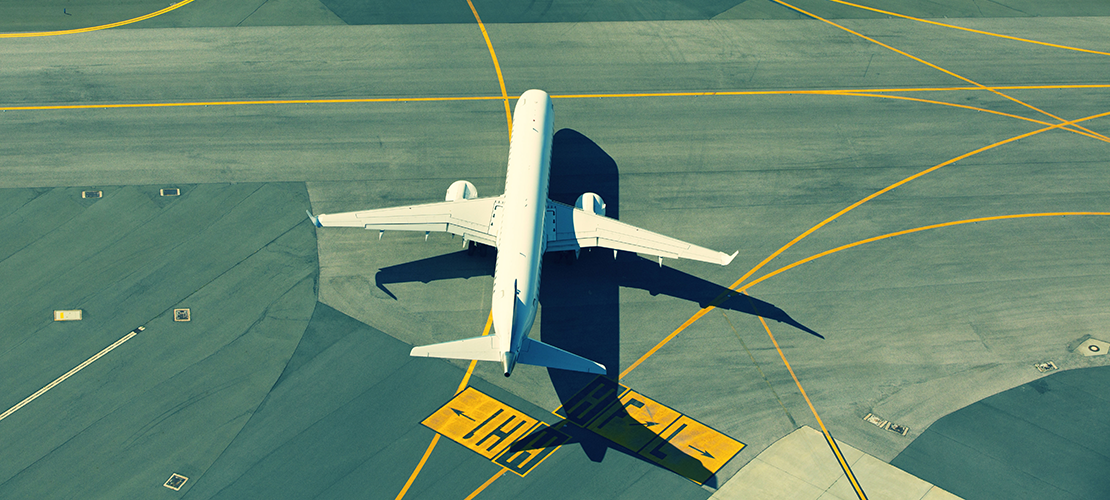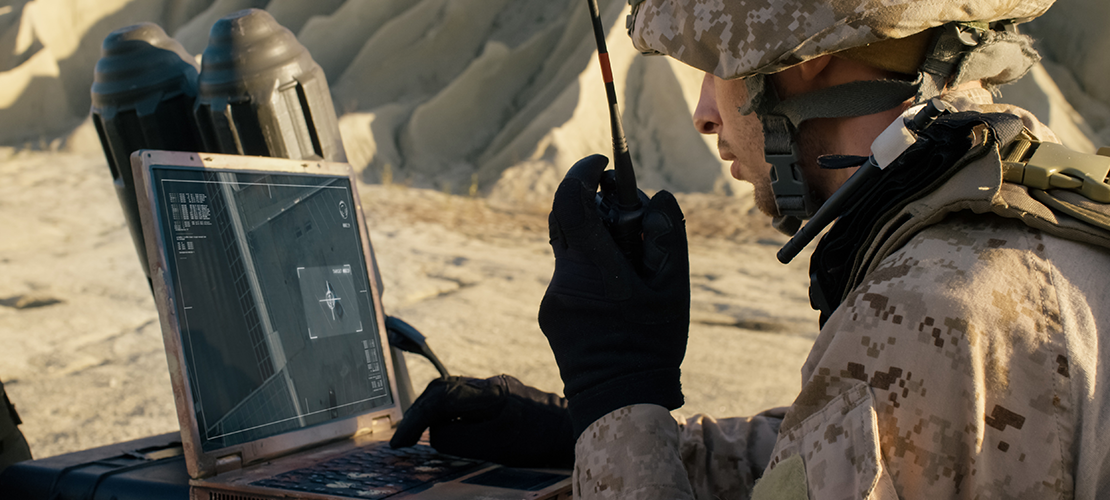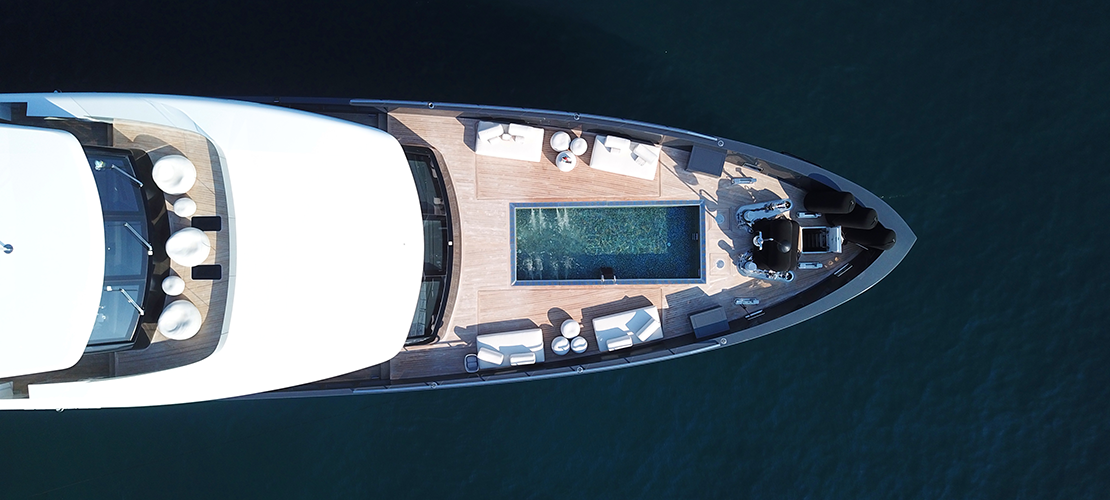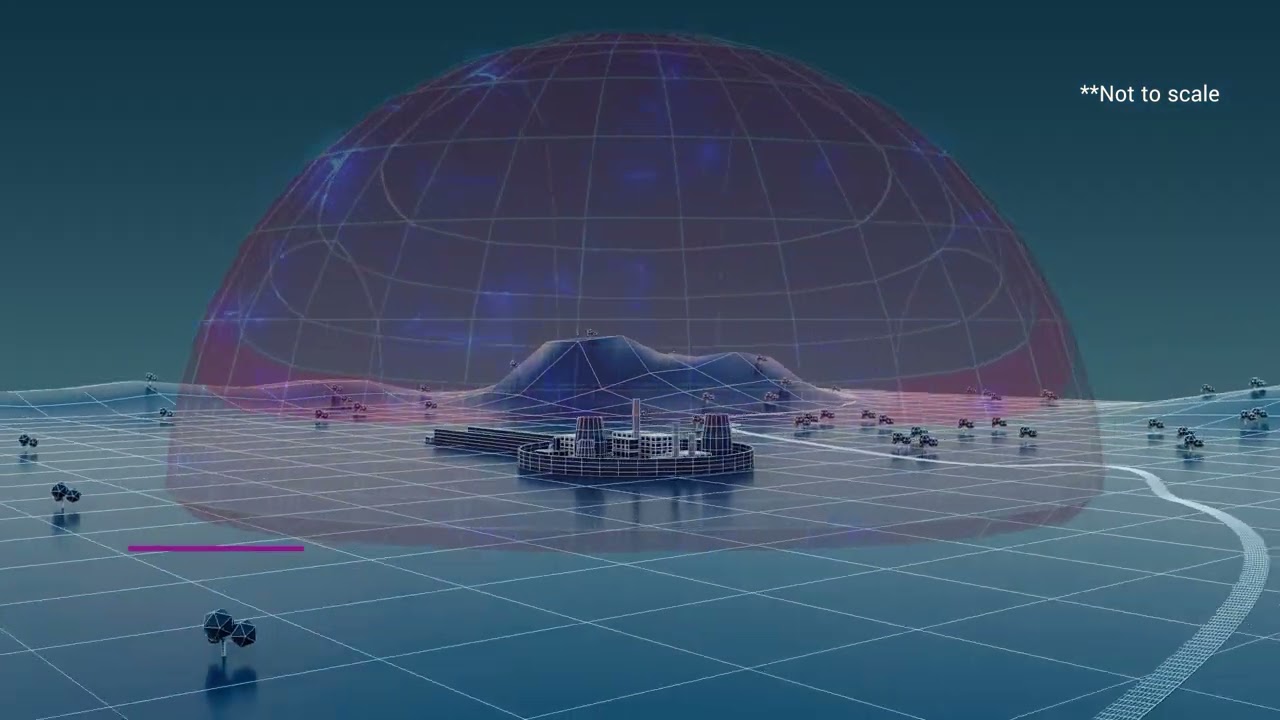Airfields and Perimeters
Operational challenge
Airfields are a target-rich environment, presenting challenges for Counter Drone and aerial threat systems. QinetiQ have unique experience from our support to UK MOD in supporting aircraft, operating aircraft test and evaluation (T&E) ranges, and building and operating target drones for T&E. We are therefore well-placed to understand your requirements, and develop site-specific solutions.
Beyond Detection
Following drone detection, QinetiQ's Obsidian system utilises a range of sensor technologies, such as powerful day/night cameras, to provide additional visual confirmation of potentially dangerous payloads.
Track multiple targets
Necessary for Airport use, and a result of its staring radar technology, Obsidian can track in excess of 100 targets simultaneously, accurately identifying and tracking which ones are drones vs birds, and labelling them accordingly using artificial intelligence (AI). The system camera is automatically slewed to threats, allowing rapid positive ID in a busy control room.
Advanced warning
Each back-to-back pair of QinetiQ's Obsidian 180˚ 3D radars provides 360˚ coverage 90˚ elevation, and 3.5km range, creating up to a 7km detection 'bubble'. These zones can easily be extended to multiple locations and controlled within the same network, providing a single interface into a distributed system. Interfaces may be replicated in multiple control rooms for situational awareness where it's needed. This provides advanced capability that automatically generates alerts without placing additional demands on operators.
On the move
Obsidian’s new ‘on the move’ capabilities provide a mobile system for deployment to locations where disruption has been reported. In this challenging application of radar technology, Obsidian can be used to detect threats from a static or moving vehicle, making it possible to monitor your perimeters and provide target detection and tracking to enable complete situational awareness.

Military Force Protection
Operational Challenge
Recent events have shown that military personnel and equipment are vulnerable to improvised IEDs carried by drones. Drones (sometimes in swarms) are being increasingly used for low probability of intercept surveillance and reconnaissance, not detectable by conventional sensors.
Detect, Track and ID
Obsidian’s staring radar can detect and track over 100 targets simultaneously, differentiating drones from birds and other airborne items. By using artificial intelligence (AI) to rapidly characterise and assess targets, the system provides early warning of approaching threats, allowing appropriate action to be taken.
Defeat
Obsidian alerts can trigger defensive counter drone technology to eliminate any close threat. Obsidian is fully interoperable with most effector systems on the market and can be tailored to match user requirements.
On the move
Obsidian’s new ‘on the move’ capabilities provide a mobile system for deployment to locations where immediate protection is required. For Military Force protection, the benefits of this are threefold; Convoy Protection, Quick Reaction Force and temporary protection over deployed troops. Obsidian provides target detection and tracking of troops from aerial threats to enable complete situational awareness.

Secure Facilities (CNI)
Operational Challenge
Critical National Infrastructure and Military facilities have become more vulnerable since the proliferation of low-cost drones. Perimeter Security is no longer enough to stop determined individuals from breaching security and providing significant risk to operations and threat to life.
Detect and Track
Obsidian's unparalleled 3D threat-agnostic location accuracy and rapid location updates provide the ultimate in Situational Awareness of multiple simultaneous threats, allowing the appropriate action to be taken whatever the target (drones, paragliders, parachutes etc.). Its high elevation coverage provides the much desired dome of protection over your asset, meaning you don’t need to be concerned about targets flying in over the top of your radar. Furthermore, this 24/7/365 monitoring of the environment is performed completely autonomously, minimising cost of ownership.
Defend
Obsidian alerts provide the accuracy needed to precisely trigger integrated defensive counter drone technologies to eliminate threats. Obsidian’s architecture allows cost-effective integration of a range of Counter Drone effector systems, allowing our customers to choose the approach which best suits their environment, threat, and applicable law.
On the move
Obsidian’s new ‘on the move’ capabilities provide a mobile system for deployment to locations where disruption has been reported. In this challenging application of radar technology, Obsidian can be used to detect threats from a static or moving vehicle, making it possible to monitor your perimeters and provide target detection and tracking to enable complete situational awareness.

VIP, Property and Asset Protection
Privacy
People of status are increasingly vulnerable to invasion of privacy from the ever-present paparazzi and members of the public. The advent of affordable drones has increased this threat, allowing invasion of privacy in areas which would previously have been safe from being overlooked, such as large private estates or yachts. Detecting and mitigating threats before they get too close can defend that privacy.
Detect and Track
Obsidian’s unparalleled 3D threat location accuracy and rapid location updates provide the ultimate in threat detection, using multi-sensor systems able to detect simultaneous threats whether located on a moving land or sea vehicle, a static office or a residential location. Furthermore, our 24/7/365 monitoring of the environment is performed completely autonomously, minimising cost of ownership and ensuring peace of mind.
Defend
Obsidian alerts provide the accuracy needed to evade the prying eyes of drone cameras or activate a counter drone technology. Obsidian’s architecture allows cost-effective integration of a range of Counter Drone effector systems, allowing our customers to choose the approach which best suits their environment, threat, and applicable law.
On the move
Although many VIP Asset Protection applications call for the defence of static targets, Obsidian is also able to operate whilst ‘on the move’. In this challenging application of radar technology, Obsidian can be used to detect threats from a static or moving vehicle, making it possible to monitor a developing aerial threat situation on land or at sea.









